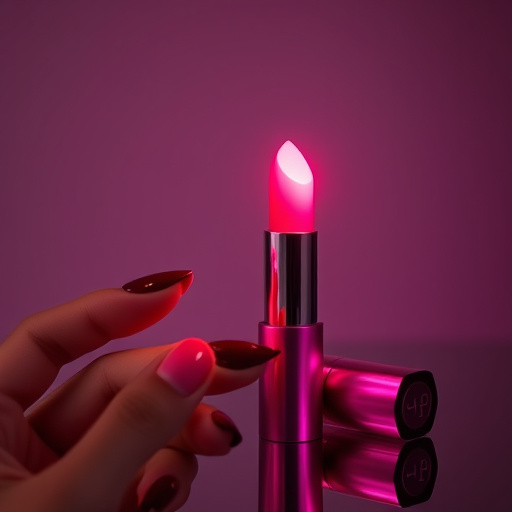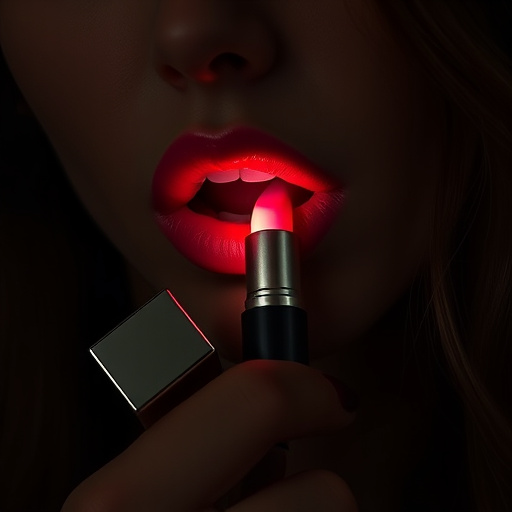Lipstick tasers, disguised as cosmetics cases, utilize advanced electrical pulse technology to provide powerful non-lethal self-defense. The frequency of these pulses, measured in Hertz (Hz), directly impacts the intensity and effectiveness of the stun, with higher Hz delivering stronger shocks. This critical factor ensures users can incapacitate attackers while minimizing potential harm, making lipstick tasers a safe and effective everyday carry option for personal protection. Understanding pulse frequency is essential for safe use, especially considering customizable settings and potential side effects like muscle spasms.
“Unraveling the intricacies of electrical pulse frequency in stun guns, this article offers a comprehensive guide. From the fundamental operation of these devices to the rise of compact yet powerful ‘lipstick tasers’, we explore how pulse frequency plays a pivotal role in their effectiveness.
We’ll delve into the science behind it, dissecting the impact on shock intensity and safety considerations for users. Whether you’re fascinated by innovative stun gun technology or concerned about personal safety, this piece promises insights into the key aspect of lipstick tasers: their electric pulse frequency.”
- Understanding Electrical Pulse Frequency: The Basics of Stun Gun Operation
- Lipstick Tasers: A Compact Design with Powerful Technology
- How Pulse Frequency Impacts Stun Gun Effectiveness
- Safety and Considerations for Users: Managing Shock Intensity and Side Effects
Understanding Electrical Pulse Frequency: The Basics of Stun Gun Operation

Understanding Electrical Pulse Frequency is key to grasping how stun guns, or lipsticks tasers as they’re sometimes called, operate. These devices deliver electric shocks through a series of rapid electrical pulses sent to the target’s body. The frequency, measured in Hertz (Hz), refers to the number of these pulses delivered per second. Higher frequencies generally result in more intense jolts, causing muscle contractions and disorientation in the target.
Stun guns use carefully calibrated pulse frequencies to achieve a balance between effectiveness and safety. Lower frequencies might not be enough to disrupt motor functions, while extremely high ones could potentially cause harm or even cardiac arrest if incorrectly applied. The right frequency ensures that the shock is powerful enough to incapacitate an assailant without causing permanent damage, making lipsticks tasers versatile self-defense tools for individuals seeking non-lethal force options.
Lipstick Tasers: A Compact Design with Powerful Technology

Lipstick Tasers, as their name suggests, are stun guns designed with a compact, sleek profile resembling a lipstick case. This innovative design offers more than just aesthetics; it provides a convenient and discreet way to carry a powerful self-defense tool. These devices pack a surprising punch in a small package, featuring advanced electrical pulse frequency technology that delivers a strong jolt when activated.
The compact nature of lipstick tasers makes them easily concealable, allowing users to feel secure knowing they have a reliable defense mechanism at their fingertips. Their lightweight and portable design means they can be carried in purses or pockets, providing quick access in emergencies. Despite their small size, these devices are engineered with robust technology, ensuring effective stun capabilities to disable an attacker momentarily, giving the user precious time to escape.
How Pulse Frequency Impacts Stun Gun Effectiveness

The electrical pulse frequency in stun guns plays a critical role in determining their effectiveness as non-lethal self-defense tools. A higher pulse frequency means more electrical pulses are delivered per second, which can intensify the stun effect. Lipstick tasers, for instance, often utilize high-frequency pulses to ensure swift and powerful jolts without causing permanent damage. This technology allows users to incapacitate an assailant quickly, giving them valuable time to escape or summon help.
The impact of pulse frequency becomes evident when comparing lower-frequency devices. Slower pulses may provide a weaker shock, potentially requiring the user to discharge the weapon multiple times to subdue an attacker. Conversely, higher frequencies enable more consistent and reliable stun effects, even in challenging conditions like rainy weather or when the target is wearing protective gear. This consistency makes lipstick tasers and their high-frequency design particularly appealing for personal safety applications.
Safety and Considerations for Users: Managing Shock Intensity and Side Effects

When using stun guns, such as lipsticks tasers, it’s crucial to understand the electrical pulse frequency and its impact on user safety. The intensity of the shock delivered is directly related to the frequency; higher frequencies can cause more intense jolts with potentially severe side effects. Users must be aware of these considerations to ensure safe application.
Managing shock intensity involves adjusting the device’s settings or pulse mode, especially for non-lethal self-defense scenarios. Some lipsticks tasers offer customizable frequency levels, allowing users to balance effectiveness and safety. Additionally, understanding potential side effects like muscle spasms, disorientation, or temporary paralysis is essential. Users should be prepared for these reactions and seek medical attention if needed, especially for individuals with pre-existing health conditions.
Stun guns, particularly innovative designs like the lipstick taser, rely on precise electrical pulse frequency to deliver a powerful yet controlled shock. Understanding how this frequency impacts effectiveness is key to ensuring safe and successful deployment. By choosing stun guns with optimal pulse rates suited for specific needs, users can maximize protection while minimizing potential side effects. In the case of the lipstick taser, its compact design seamlessly integrates advanced technology, offering users a discreet yet potent self-defense solution.
